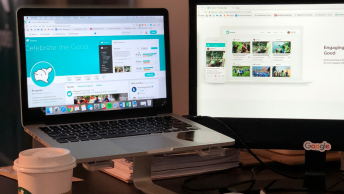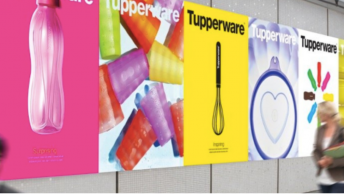Proximity marketing will be something that many brands have to think about in 2019. Read on to learn more about this change in the marketing industry.
The World Of Marketing Is Always Changing

In the marketing world, things can change quickly or in unexpected ways. Sometimes, new hot technology will come out. Then it will lay low for a few years before popping up again in a big way.
Beacons are one such technology. Since their introduction five years ago, after much hype, they have fallen out of the limelight.
This is because they needed time to get better. Essentially, there were a lot of kinks to be worked out. Finally, in 2019, it’s looking like beacons are getting ready to live up to the hype. So, this will put proximity marketing in the forefront for many brands.
SEE ALSO: How to Introduce Marketing Automation to Your Business
What Are Beacons, Anyway?
Beacons are tiny devices that send signals over short distances. This is usually about a handful of feet. All of the devices in range of a beacon can pick up the signal it transmits. So, this means that you can target nearby users with specific messages or actions.
However, you are not bound to only using one beacon. A network of beacons in a larger area, such as a city or neighborhood, can work together. They let you send those messages to everyone in that space. So, this makes exciting proximity marketing opportunities.
Beacons Provide Whole New Proximity Marketing Opportunities
Beacons may truly be the marketing wave of the near future. They may create a world where tourists can receive notifications about nearby landmarks as they travel the world’s great cities.
It would also allow shoppers to get notifications about deals at stores as they pass by them. It would open up people to all sorts of proximity marketing. Beacons open up whole new realms of marketing possibilities.
Here are some of the most exciting marketing opportunities this technology offers:
- Location targeting
- Mapping customer journeys in store
- Measuring the frequency and length of visits of customers
- In-store messaging
- Guiding users
- Gamification
- Hyper-targeted marketing
- Instant loyalty rewards for shoppers
- Sending customers deals and promotions
It is likely that as this technology develops and becomes more widespread, whole new uses will be found for it.
SEE ALSO: 5 Ways to Use Location Based Marketing For Your Brand
Aren’t Beacons Old News?
Kind of. Apple introduced the iBeacon in 2013 and it caused a ton of buzz. People were saying that beacons would create high tech smart cities almost overnight.
People often get very excited and inspired by new innovations in tech. However, that hype rarely delivers instant and huge changes.
The same can be said for the beacon. They have come into use quietly in some places around the world over the past five years. However, they have yet to be a huge part of any utopian smart cities.
First Generation Beacons Had Some Big Problems
This is because, like many new innovations, there were some kinks that needed to be worked out. First Gen beacons were just not ready to become the cornerstones of any iCities.
In 2015, the Brooklyn Museum wrote a very interesting piece about their experience using the first generation of iBeacons. They had a lot of issues with this technology. These included:
- Lack of colors
- Lack of serial numbers
- Inability to stick to the walls
- Signal problems
- Issues locating them
- Difficulty knowing if they were functioning at all
At that point, the Brooklyn Museum noted that it was possibly too large of a venue for the technology.
I think our size is pushing the limits here; I simply can’t image scaling this solution to larger organizations without a lot of custom software and overhead that totally defeats the purpose of a lightweight solution.
This made beacons a pretty far-fetched proximity marketing tool for most brands back then. So, they were also even farther away from powering futuristic smart cities.
The Next Generation of Beacons
In 2015, Google launched the next generation of beacon technology with Google Beacon Platform and the open source Eddystone format.
The Google Beacon platform gives developers all of the tools and resources they need to create their own beacon functionality. In addition, Eddystone is the alternative technology to iBeacon. Eddystone has many similarities to iBeacon, except for these key differences:
- It is compatible across platforms, while iBeacon works with iOS only.
- Eddystone is open-source.
- Eddystone can send four types of signals, while iBeacon can only send one.
- They are more versatile and accurate and can work on a larger scale.
- You can operate them via the Google Cloud Platform.
So, here is some of what Googles beacons can really do.
The Innovations of the Google Beacon Platform
Google Beacon Platform has greatly expanded on and improved beacon technology. Due to this, a lot of the big beacon manufacturers are starting to make devices that support all of the functions that are a part of Eddystone.
However, this innovation is important in two key ways. For one, the software side of things is much easier. And secondly, in the practical implementation of this technology. This, which the Brooklyn museum struggled with so much, has been improved. So, this will make proximity marketing via beacons far simpler.
SEE ALSO: 5 Steps to Targeting Your Social Buyer
The End of the Single Use Beacon
Initially, one beacon could only be used for one thing. This posed a nightmare for more complex organizations with different needs.
Ultimately, in order to have beacons serve every possible need, you might end up needing a truly unmanageable number of beacons. So, this would make using beacons for proximity marketing a nightmare.
However, with the easily manageable Google Beacons dashboard, you can set up a beacon to perform multiple tasks. And you don’t need a degree in computer science to do it. This makes proximity marketing more accessible for advertising firms.
Checking On Your Beacons
Before, it was hard to know exactly how your beacons were doing. It was hard to know if they were having problems, or if they needed to be charged or replaced until they malfunctioned in a big way.
However, Eddystone allows you to send different types of signals from beacons. These include sending performance data. Now, you can easily track the performance of beacons before any big problem occurs. So, this would make proximity marketing far more seamless.
The Cloud
Google’s cloud-based development infrastructure creates a tech playground. It is where developers can work together to solve big problems. It means that teams can also work together to create a seamless experience between applications.
This can work on a small scale. It can include reaching shoppers in a store with proximity marketing. It can also work on a larger scale. This might mean playing a big role in the smart cities of the future too.
How do you think beacon technology will ultimately change advertising most? Comment below…











